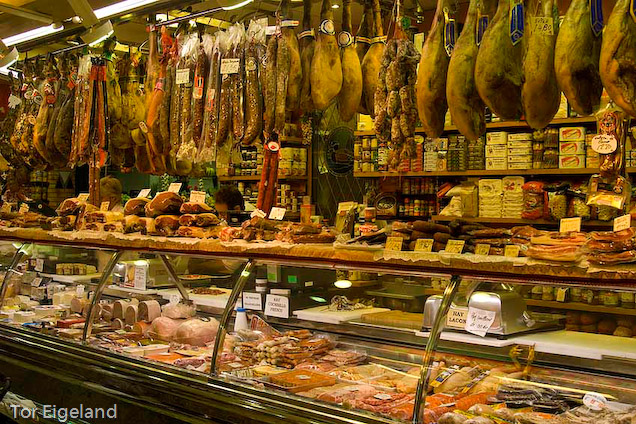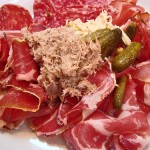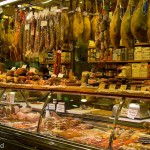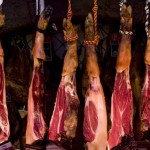We have so many reasons to be grateful to the humble pig. In the true traditions of French and British charcuterie, every part of the porker can be put to good use – true nose to tail eating. Pork roasts and chops are just the start, and most people (Muslims and Jews apart) cannot resist the smell of good cured and smoked bacon sizzling in the pan. But the sheer wealth of tasty pig-based foods is truly astonishing – we should make far more of them than we do.
To be strictly accurate, charcuterie refers to prepared meat-based foods, but in practice most of the products included on a charcuterie platter will inevitably come from the pig. it has also been defined as “the craft of salting, smoking and curing”, though you can extend it to uncured meats as well. The joy is that every nation has its own unique and distinct brand of charcuterie traditions, each delicious but imbued with the cultural characteristics of its origins.
1) Sausages: fresh sausages are made the world over with many flavourings. The British banger at its best is up there with the finest, but it has to be said that we are only recovering from the years when the cheapest of rusk-filled bangers were given to our guests. These days it’s quite possible to find top quality pork and other meats (with the right quantity of fat for flavour and succulence) and natural flavourings in traditional cases, and a minimum of cheap nasty fillers. Not only that but the increasing globalisation of recipes means we can now enjoy the likes of boerewors from South Africa and equivalent bangers from around the world. For a good selection of top-quality snags, try here and here, or one of the examples listed in this or this article.
Also worth having a go at your own sausages, though it can be fiddly until you have got the hang of it, and obtained the right equipment to do the casing!
2) Cured sausages and salamis: the finest salamis are Italian – Milano, Napoli and Felino Salame to name but three. The manufacturing process for the latter makes fascinating reading:
According to production regulations the meat must be selected and once the tendons have been removed it should be cut into small pieces in preparation for mincing. This is where the creativity of traditional recipes comes in and the moment that the magic takes place. To season the minced meat mixture the first step is salting, with its dehydrating, cleansing and preserving properties. Then it is seasoned with herbs, black pepper and crushed garlic. These are the vital ingredients which ensure the success of that characteristic smooth aroma. Some recipes include the addition of white wine, cinnamon, ginger, cloves, aniseed, nutmeg, saffron, rosemary, sage, fennel, laurel, basil and celery… there are clearly a number of variables but the outcome is invariably unique. Thanks to a stuffing process, the casing is filled, the product is tied with a single length of string creating transversal, sparse, knots and leaving a loop at one end so that the product can be hung to mature. The next steps are drying followed by the maturing phase. The salamis are then neatly hung for 4-6 days in an environment where the temperature and humidity are controlled. The products will then undergo a final maturing process in special environments with temperatures varying from 12-28°C for at least 25 days, after which the Felino Salame will be ready for tasting. A suggestion for optimal storage, passed down from days gone by, is to wrap the salame in a cloth that has been dampened in white wine.
As with many of these delicacies, they depend on fat content for moisture and flavour, but can be made from a whole range of meats. Most will include pork to some degree. My personal favourite are the best quality French saucisson sec (literally ‘dry sausage’), flavoured with black pepper and garlic. Look out also for other variants, including the smoked paprika flavoured chorizo from Spain. Exquisite!
3) Air-dried meats: the most famous are of course Italian Parma and San Daniele ham (prosciutto crudo) and Spanish Serrano, but the supermarket equivalents are a far cry from the real thing sold in those countries. Aged on the bone and carved fresh and finely to order, the intensity of flavour has to be experienced at least once in a lifetime. The very best Jamon Iberico de Bellota are from a very traditional Spanish species, fed on acorns, their legs cured and dried in mountain air for several years. It can easily cost twice as much as any other ham you ever tried, but the results are sensational.
Like Beluga caviar or Kobe beef, Jamón Ibérico de Bellota is the one of the supreme luxuries of the meat world. These hams are made from a distinctly Spanish breed of black-footed pigs often referred to as “Pata Negra.” These unusually lucky pigs spend a majority of their lives freely roaming the Dehesa woodlands of Western Spain, feasting on a diet that consists primarily of acorns (bellota, in Spanish). This acorn-laden diet, in combination with its free-range lifestyle, results in a ham that is not only full of rich, nutty and ultimately distinctive flavor, but that also has a surprising number of health benefits. Jamón Ibérico de Bellota contains more antioxidants than other hams, as well as more oleic acid (the same “healthy fat” found in olive oil) than any other meat.
Luckily you don’t need to buy this very scarce variety to find very tasty ham – there are plenty of excellent and tasty varieties, but do go to a deli where they will carve to order if at all possible. Look out for British hams too, and indeed other dried meats such as Italian bresola (made from beef). Also worth mentioning my son’s favourite dried meats – beef jerky and especially biltong.
4) Other cured & smoked meats: although there are many different cured and smoked meats, the best loved to Britons is bacon. The best are “dry cured” and the worst injected with brine. If you want to avoid the cheap and nasty, go for dry cure every time, green or smoked.
Traditionally smoked bacon and meat is way superior, so avoid cheap products injected with imitation smoke flavours and artificially coloured to make it look like the real thing. There is no comparison. There are two methods of smoking: cold and hot. Bacon is cold-smoked, meaning you have then to cooking it before eating but it is imbued with glorious smokey flavour gained from indirect exposure to wood fires. Frying smokey bacon in a pan is the most glorious smell in the world, along with new born babies, fresh brewed coffee and fresh baked bread!
Hot smoked are cooked and can therefore be eaten hot or cold. Many other meats can be smoked by either means, though of course our favourite means of cooking smoked meat is by charcoal grilling, sometimes with the aid of hardwood chips like hickory, over a barbecue.
5) Pâté, terrines & potted meat: traditionally eaten as a starter on melba toast, Pâté is typically smooth or coarse and made from ingredients including pig, chicken, duck or goose liver, the latter being the infamous “Pâté de foie gras“, there a terrine is typically a coarser mixture including whole or chunked ingredients. Foie gras is the most delectable way to serve liver imaginable – it melts in the mouth and tastes divine – and would be beloved by all but vegetarians and weight watchers were it not for the force-feeding of geese required to make their livers bloat to several times the normal size.
Humble British potted meat, typically spread on sandwiches, is pleasant but not generally regarded as being in the same league. Nonetheless it works well with a variety of recipes and is very tasty. Spiced potted beef, for example, can be warmly recommended, and is a league apart from the nasty cheap luncheon meats like Spam with which potted meat has often been associated.
6) British meat products: we rejoice here in our own range of meat products. Where would we be without:
- Black pudding, traditionally made from pigs blood, fat, onion and spices in the UK, though many countries have their own equivalents, like boudin noir (French) or morcilla (Spanish). Sliced and fried with an English breakfast, any black pudding is totally delicious, but preferably not the industrial sticks – go for an encased ring.
- Pork pies, preferably Melton Mowbray pies after the town in Leicestershire where they originated, should be made from fresh pork rather than cured, filled with jellied pork bone stock, and seasoned well to taste quite spicy. They are encased in hand-raised cold water pastry, and are greatly loved in the UK!
- Scotch eggs sound simple – hard boiled egg wrapped in seasoned sausage meat, coated in breadcrumbs and deep-fried. Some mystique has grown around them, not to mention many recipes, but there can be no doubt that home-made or gourmet scotch eggs are infinitely superior to the kind sold by supermarkets. The best I ever ate had a yolk still slightly soft. Divine!
- Haggis is made from lamb offal and is the quintessential Scottish delicacy? Making your own is quite a performance, not to everybody’s taste, but then when you have haggis as good as Macsween’s, why bother? Traditionally served with bashed neeps and tatties (swede and potato, cooked separately), plus a wee dram of Scotch malt whisky, and celebrated most keenly on Burns’ Night, 25 January.
- Faggots are a wonderful traditional dish made from minced liver and meat, formed into meatballs and served with mash, mushy peas and an unctuous gravy. Sadly you rarely see them these days. From my youth I remember fondly Brains frozen faggots in gravy – long gone, I suspect, though there appears to be a modern equivalent to the original.
- Pressed tongue, a favourite tea with salad that my mother and grandparents often used to make, is delicious though the thought of it probably drives most people away. Shame.
There are of course many more traditional delicacies of Britain and elsewhere that deserve to be kept alive as they were originally intended, not as translated into industrial processes by supermarkets and food manufacturers.
There are lots of excellent local butchers and delis out there that can supply the real deal for you, but if you do fancy having a go yourself, there are some excellent books on charcuterie out there. The one I use, Preserved by Nick Sandler and Johnny Acton, is warmly recommended, and has many other products to enjoy.










